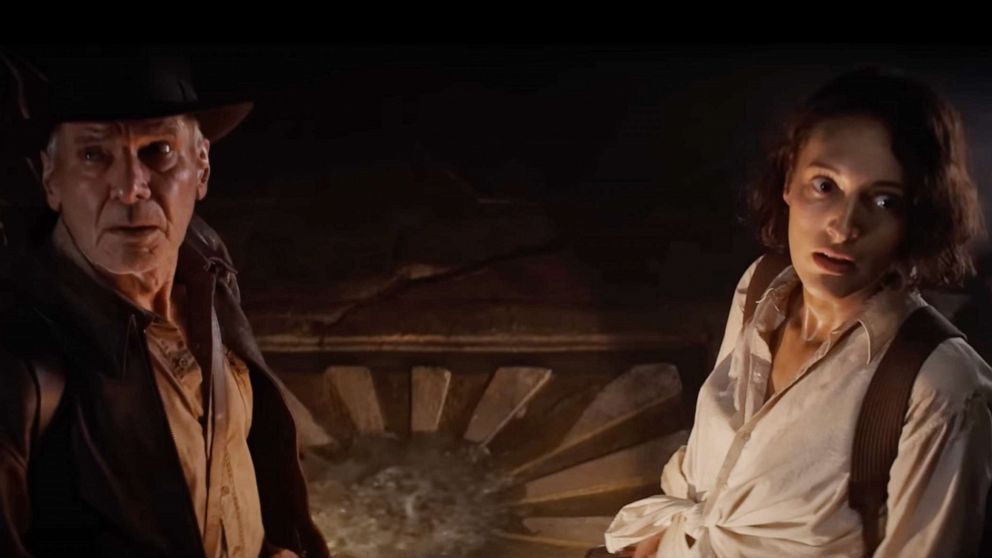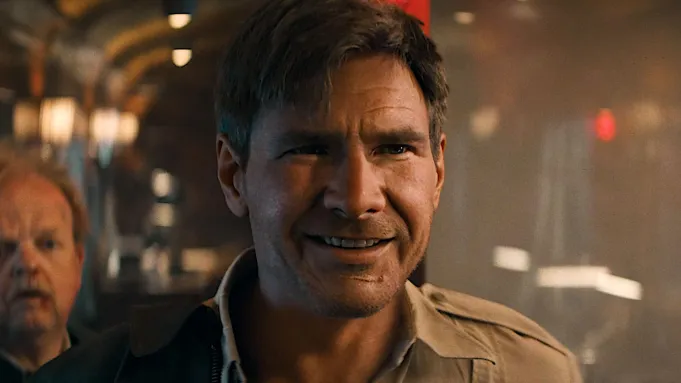Indiana Jones and the Dial of Destiny
12¦ 4K UHD, Blu-ray, DVDThis will not be news to anyone who is a discerning cineaste: the best Indiana Jones film is, without question, the original.
1981’s Raiders of the Lost Ark was a celebration of the serial films that would play before the main features in cinemas of the 30’s and 40’s, featuring a hero often in peril. It went on to spawn a franchise, with this latest entry, directed by James Mangold, being the fifth.
Of course it sees Harrison Ford return as the iconic screen hero, in what is also touted as the last adventure for the world’s favourite teacher/archaeologist.

Wow, the critics at the back are pretty vocal huh.
It’s 1969, the dawn of a new age in science with man walking on the moon, which also marks the end of career for a certain Indiana Jones (Ford), as he decides to retire from teaching, at his current school of Learning, Hunter College in NYC.
During one of his last lessons however, he notices a bright young student in his class. She later introduces herself as Helena (Phoebe Waller-Bridge), but he would know her better as Wombat. It’s then that it clicks for Indy; she’s his god-child, all grown up.
She’s come asking about a relic he and her father Basil (Toby Jones) got their hands on back in the day, the Archimedes’ Dial, which is said to have an incredible power. He warns her that it’s best to leave that part of history well alone, as her father became obsessed over it, but he gets the impression she’s not going to heed his warning.
It transpires that one half of the dial is in the school’s archives, and as the pair quickly realise, they are not alone in knowing this information, as they are soon attacked by astrophysicist Jügen Voller (Mads Mikkelsen) – whom Indy has previous with back in the day in retrieving the dial – and his men, which makes the pair flee for their lives, with the dial in their possession.
Indy may well have been on the cusp of retiring from his job of teaching, but it appears that he’s still got one last adventure in him, whether he likes it or not.

Damn, whatever Ford's on, i'll have the same!
Since his break out film, 1997’s Copland starring Sly Stallone, American director James Mangold has gone on to carve out an impressive career, featuring diverse stories and themes. You get the impression that he signed on to this one purely from being a fan of the iconic character, and you can’t begrudge him that.
And even he would have known that the original has remained the best of the franchise, making his job even more of a tall order. But probably even he knew in the back of his mind that at least it wouldn’t be the worst, with that honour firmly going to 2008’s Indiana Jones and the Kingdom of the Crystal Skull. And thankfully it isn’t. In fact there’s a good argument for it actually being the second best Indy film.
A key to the film’s success is sticking to the formula that worked so well with the first, as well as echoing the film and the franchises template, which is adventure, is paramount. Obviously some have had more success sticking to it better than most, but this one is up there.
Where the film impresses, as it did with the first, is in its set pieces. Mangold’s film pays homage to those now iconic scenes, with breathtaking action sequences; they are James Bond-esque in their execution, but still very much with Indy in the driving seat. They take place in similar exotic locales, using the same brown and khaki palette visually, scored once again by John Williams and his recognisable Indy anthem.
It also impresses with some incredible scenes using the most feared bit of tech currently on the planet – AI. There are flashbacks that feature a young Jones, as played by a younger Ford, that look remarkably lifelike. Apparently this was achieved by AI searching through every bit of archive footage of Ford in his younger days, on various film projects, and recreating his likeness as it was in the eighties. The result is uncanny, underpinned by a thin veil of fear at the prospect of what else it can do.
Mangold also includes other motifs used throughout the series, such as Waller-Bridge’s character Helena representing the very capable heroine who rarely needs saving, and Mikkelson as the necessary baddie whose ambition has no bounds.
The one sticky area is the film’s story; it had four writers credited and it shows, for what is an overlong feature (two and a half hours), that drags its heels in places as well as goes a little bit into Bill & Ted territory with its finale, that some might struggle with.
Overall however, it’s evident that it was produced with nothing other than utter respect and love for him and his world, with Mangold having a fair crack of the old whip at a fitting farewell for one of cinema’s most beloved iconic characters.
